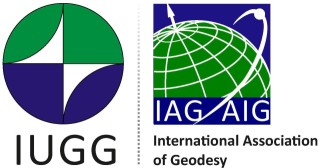It is generally accepted that many subsurface processes including the migration of magma and/or hydrothermal fluids can cause volcanoes to deform. Given the complexity of not only the causative processes but of the mechanical behaviour of the Earth's crust, the interpretation of deformation signals is challenging. Here we report on our research in Bolivia and Ethiopia where enigmatic volcano deformation has been identify primarily by satellite remote sensing techniques followed by ground-based GNSS and gravity surveys to characterise the processes behind the deformation.
In southern Bolivia, InSAR data from 1992 to 2011 identify a 150-km-wide ground deformation anomaly centered on Uturuncu volcano. Static gravimetric data show that the anomaly is situated above a regional Bouguer gravity low and data inversions propose a complex assembly of vertically elongated low-density bodies which connect a large and partially molten magma reservoir (the Altiplano-Puna magma body, APMB), located ~20 km beneath the deforming surface with the surface. Using deformation and dynamic microgravimetric data coupled with numerical modelling we show that subsurface stress changes are likely caused by the episodic reorganization of an interconnected vertically extended mid-crustal magmatic plumbing system composed of the APMB and a domed bulge and column structure. Measured gravity-height change gradients point toward low-density hydrothermal fluid migration as the dominant process behind the deformation. Orthometric height changes from leveling and GNSS observations in 1965 and 2011/12 along a regional leveling line that crosses the InSAR deformation anomaly demonstrates that the deformation at Uturuncu has likely been occurring for at least half of a century.
In the Main Ethiopian Rift, satellite geodesy shows ground deformation at several large caldera systems over the past 20 years. Joint deformation and gravimetric observations at two of the calderas (Alutu and Corbetti) over a two-year period between 2014 and 2016 show that residual (after correcting for deformation effects) gravity changes at Aluto follow a complex spatio-temporal pattern which is inconsistent with the spatially coherent pattern of ground deformation observed by InSAR geodesy. This may allude to a decoupling between the sources responsible for deformation and gravity changes. Our interpretation of the gravity changes are predominantly caused by shallow-seated (
In contrast, residual gravity changes at Corbetti point towards a deeper-seated (>5 km depth) source compared to Aluto. This source likely coincides with the source of significant uplift recorded at the caldera with mean annual InSAR line-of-sight velocities of up to 7 cm/year in the centre of the caldera. Our preliminary interpretation of deformation and gravity data alludes to volume and density changes in an upper-crustal magmatic reservoir as the source behind the recorded uplift.

 PDF version
PDF version
